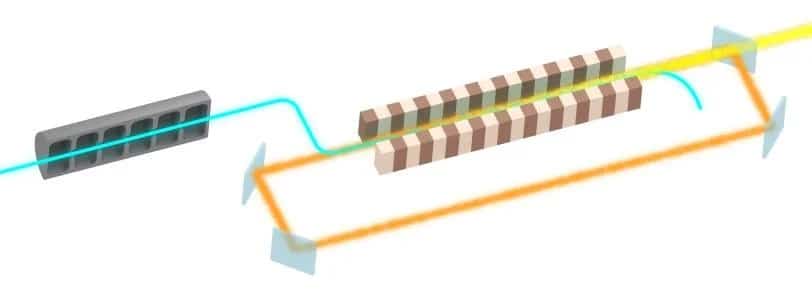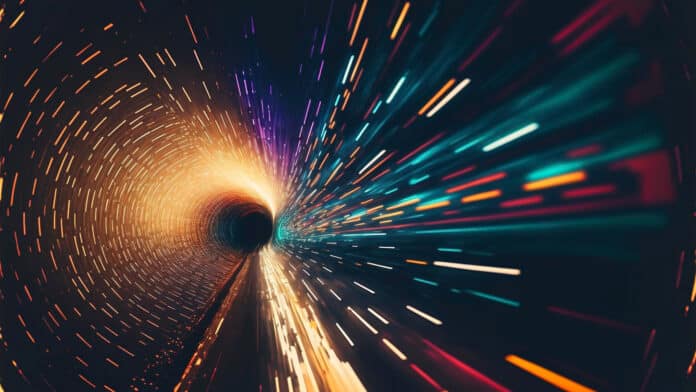Despite tremendous progress in X-ray free-electron laser (FEL) science over the last decade, future applications still demand fully coherent, stable X-rays that have not been demonstrated in existing X-ray FEL facilities.
Now, researchers from the Department of Energy’s SLAC National Accelerator Laboratory have calculated how to make X-ray pulses at X-ray free-electron lasers (XFEL) even brighter and more reliable by building a special cavity chamber and diamond mirrors around an XFEL.
Researchers used an intricate crystal cavity and mirror system without needing an extraordinarily long and complicated cavity.
SLAC scientist and paper co-author Jingyi Tang said, “The motivation for generating coherent, higher brightness X-rays is to study real-world materials and what happens to those materials under different conditions. We want to study more dynamic and difficult-to-capture systems.”
At first glance, it is impossible to capture X-rays using mirrors. But with the necessary storage equipment and a creative mind, such a concept would be feasible at a high-repetition-rate accelerator like LCLS-II.
Researchers studied the cavity-based X-ray free electron laser (CBXFEL). In this concept, incoherent X-ray pulses produced at an accelerator facility, such as the one at SLAC, are captured by a hollow structure that may be hundreds of meters or perhaps more than a kilometer long.

Inside the cavity, X-rays bounce off four diamond mirrors, which deliver the X-ray pulses in rectangular laps. The next electron bunch within the accelerator travels toward them while the pulses run around inside the cavity.
When the electron bunch arrives, the bouncing X-ray pulse reacts, tightening and arranging it. When twisted around in an undulator, this tighter electron group produces more coherent and brighter X-rays further down the accelerator.
Before their new calculations, experts believed that maintaining the power of an X-ray pulse as it bounced around the cavity would necessitate closely spaced electron bunches or a kilometers-long cavity, making the notion considerably more difficult to implement.
SLAC scientist and co-author Zhen Zhang said, “We showed that a high-quality cavity system might only need to be 100-300 meters long, even with a powerful XFEL operating at a slower repetition rate, which means more space between electron bunches.”
The key to this novel design is managing what experts term the cavity’s quality factor, Q. The reflectivity of the mirrors in the cavity is represented by the quality factor. A high Q value indicates very high reflectivity, allowing the X-ray power to recirculate in the cavity with minimal loss. A lower Q value indicates reduced reflectivity, which means that a considerable portion of X-rays exit the cavity and are transported down the accelerator.
Q is kept very high when the X-rays are recirculated in a shorter cavity without interacting with the electron bunch. Researchers can carefully regulate the amplified X-ray wavelength and spectrum to change the cavity Q when these X-rays come into contact with an incoming electron bunch, a process known as Q-switching. This means they can lower the Q value when the X-rays have sufficient power to escape the cavity and travel down the accelerator to experiments.
Researchers can give the coherent X-ray pulse their turn to recirculate several times around the cavity and mirror system by regulating Q. Because coherent X-ray pulses may now travel around the system with a minimum loss, they have more time to build up power, reducing the required cavity length and producing X-rays with high output power.
Scientists noted, “The initial goals of the experiment are to demonstrate the power increase after the X-ray is recirculated by the cavity and to observe the cavity’s performance. Q-switching could also be tested on such a CBXFEL system after the initial goals of the experiment are reached.”
Journal Reference:
- Tang, Zhang, et al., Active Q-Switched X-Ray Regenerative Amplifier Free-Electron Laser. Physical Review Letters, 31 July 2023. DOI: 10.1103/PhysRevLett.131.055001
